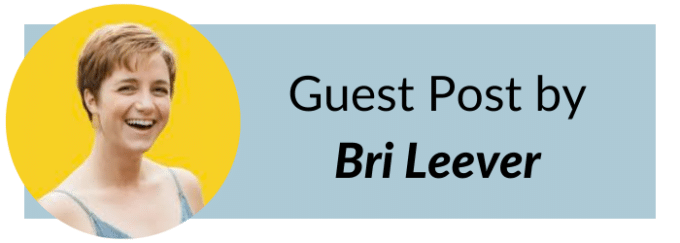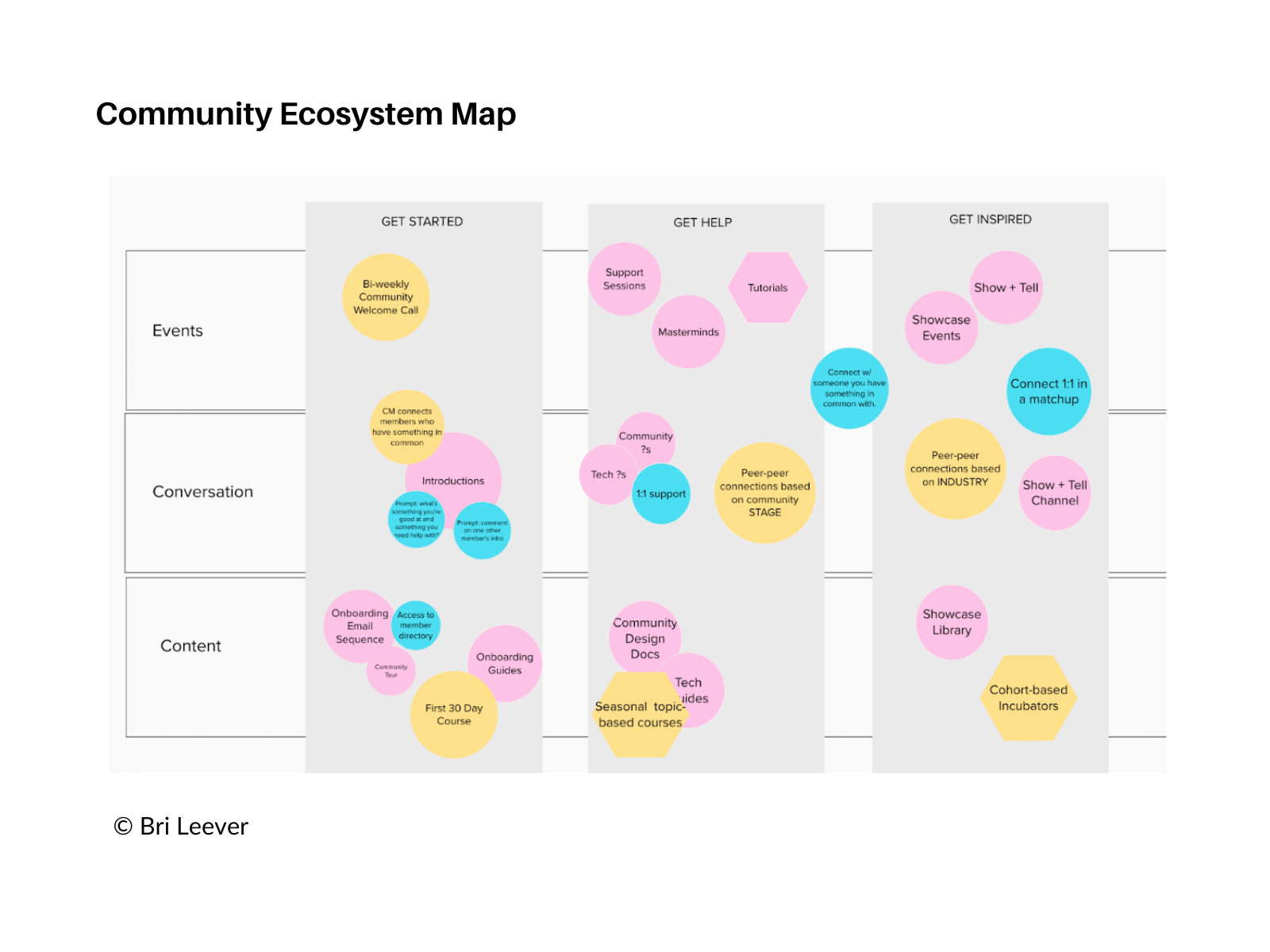

Bri Leever, Community Builder and Contributor to the 2023 State of Community Management Report shared her framework for planning effective content and programs – the Community Ecosystem Map.
Call to Action
At the top is where we put the three calls to action. I like to start with 1) get started, 2) get help, and 3) get inspired. You can customize these headings with whatever three actions you think fit your community, but I advise that you leave “get started” because it will help prompt you to focus on onboarding as a key step in any member’s activation in your community.
Size of Experience
Finally, we indicate the size of an experience using color. In any community you are facilitating big group experiences (open to everyone), small group experiences (open so a subset or segment of your community) and then 1:1 interactions. One-on-one interactions are much harder to offer programming for (beyond a matchup program), but I like to use the map to point out where we will prompt 1:1 interactions to happen. (For example, prompt members to find one person they have something in common with after they post their intro. This would sit in the “get started” and “conversation” box.)
Like all good ecosystems, the strength of your community ecosystem will come from the diversification of experiences offered. That does NOT mean more is better. It means thoughtfully crafting a range of programs that cater to different types of experiences and activate your members in different ways will result in a more robust and dynamic community.
Using the Community Ecosystem Map for a New community
I use this framework as the very first step in my process to build a new community with clients. If you are using it for a community that has yet to be born, be careful to not get caught up in how and where you will facilitate the experiences. This is a brainstorming session. Your dream girl in a dream world. Your first iteration will not include everything you have on this map (nor should it), but unleashing your brilliant ideas in this exercise will help create a vision for how your community could evolve in the future.
Using the Community Ecosystem Map for an Existing Community
If, on the other hand, you already have an established community, use this framework to map your existing experiences today and then work with your team to notice where gaps exist. Brainstorm how you can adjust existing programs or make additions that add diversity into your ecosystem. Maybe you notice the “get started” column is conspicuously empty – can you introduce a welcome happy hour event or create a welcome post (content). Maybe you notice you never prompt members to make 1:1 connections – how can you sow seeds to prompt them to make 1:1 connections at your existing events?
This framework is just the starting point to help you think about your community content and programs through a new light. Once you’ve completed the brainstorming, work backward to assess what are the elements of this map that need to be prioritized now (the next two weeks), what can happen in the next month, and what can go on the backlog to be reassessed at a later time. Don’t let perfect get in the way of creating something really good in your community and focus on making more tweaks over time than launching something perfectly from the get-go.
Bri Leever is a Community Builder and contribued her perspective to the 2023 State of Community Management Report. Learn more and download your copy here.
